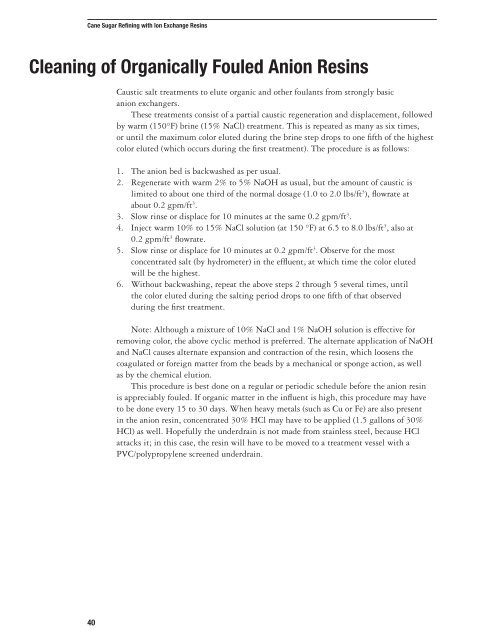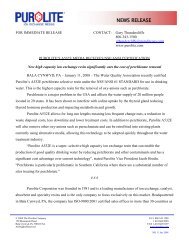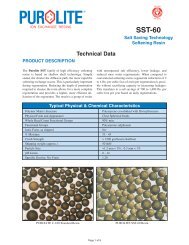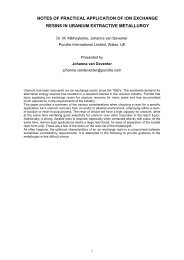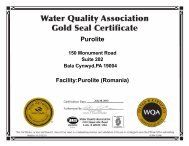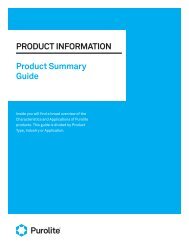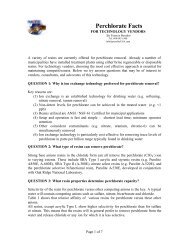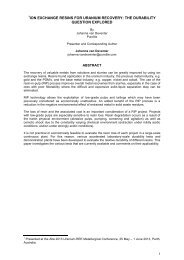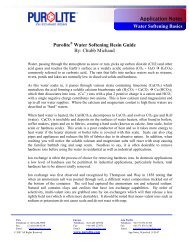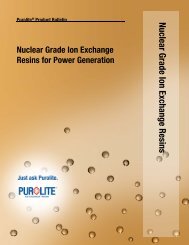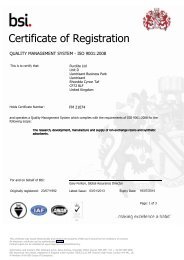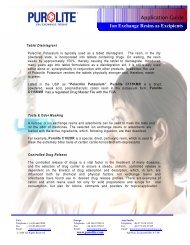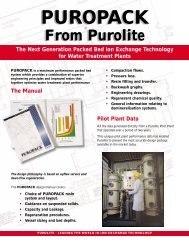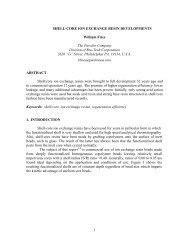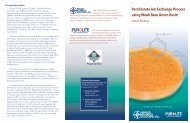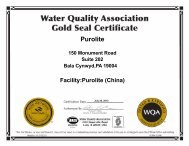Cane Sugar Refining - Purolite
Cane Sugar Refining - Purolite
Cane Sugar Refining - Purolite
You also want an ePaper? Increase the reach of your titles
YUMPU automatically turns print PDFs into web optimized ePapers that Google loves.
<strong>Cane</strong> <strong>Sugar</strong> <strong>Refining</strong> with Ion Exchange Resins<br />
Cleaning of Organically Fouled Anion Resins<br />
40<br />
Caustic salt treatments to elute organic and other foulants from strongly basic<br />
anion exchangers.<br />
These treatments consist of a partial caustic regeneration and displacement, followed<br />
by warm (150°F) brine (15% NaCl) treatment. This is repeated as many as six times,<br />
or until the maximum color eluted during the brine step drops to one fifth of the highest<br />
color eluted (which occurs during the first treatment). The procedure is as follows:<br />
1. The anion bed is backwashed as per usual.<br />
2. Regenerate with warm 2% to 5% NaOH as usual, but the amount of caustic is<br />
limited to about one third of the normal dosage (1.0 to 2.0 lbs/ft 3 ), flowrate at<br />
about 0.2 gpm/ft 3 .<br />
3. Slow rinse or displace for 10 minutes at the same 0.2 gpm/ft 3 .<br />
4. Inject warm 10% to 15% NaCl solution (at 150 °F) at 6.5 to 8.0 lbs/ft 3 , also at<br />
0.2 gpm/ft 3 flowrate.<br />
5. Slow rinse or displace for 10 minutes at 0.2 gpm/ft 3 . Observe for the most<br />
concentrated salt (by hydrometer) in the effluent, at which time the color eluted<br />
will be the highest.<br />
6. Without backwashing, repeat the above steps 2 through 5 several times, until<br />
the color eluted during the salting period drops to one fifth of that observed<br />
during the first treatment.<br />
Note: Although a mixture of 10% NaCl and 1% NaOH solution is effective for<br />
removing color, the above cyclic method is preferred. The alternate application of NaOH<br />
and NaCl causes alternate expansion and contraction of the resin, which loosens the<br />
coagulated or foreign matter from the beads by a mechanical or sponge action, as well<br />
as by the chemical elution.<br />
This procedure is best done on a regular or periodic schedule before the anion resin<br />
is appreciably fouled. If organic matter in the influent is high, this procedure may have<br />
to be done every 15 to 30 days. When heavy metals (such as Cu or Fe) are also present<br />
in the anion resin, concentrated 30% HCl may have to be applied (1.5 gallons of 30%<br />
HCl) as well. Hopefully the underdrain is not made from stainless steel, because HCl<br />
attacks it; in this case, the resin will have to be moved to a treatment vessel with a<br />
PVC/polypropylene screened underdrain.


